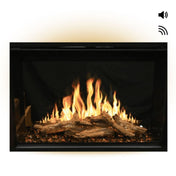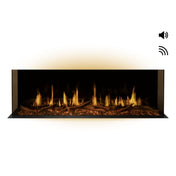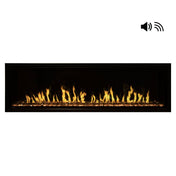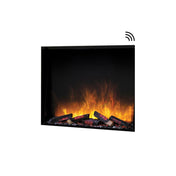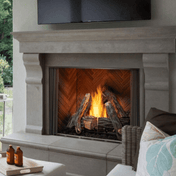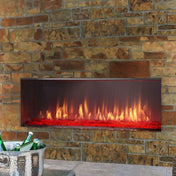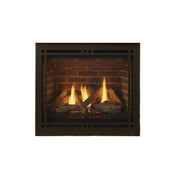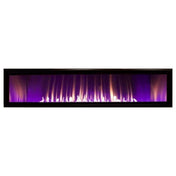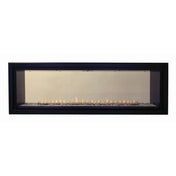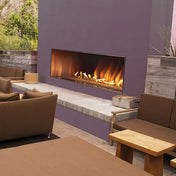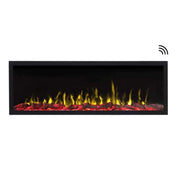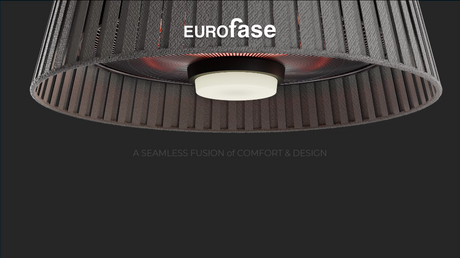Enhance your outdoor living experience with the perfect patio heater. This comprehensive guide will walk you through various patio heaters, focusing on fuel types like gas, electric, and wood pellet, as well as different installation styles, including portable, hanging, wall-mounted, and tabletop models. Whether you're looking for ambiance, warmth, or a combination of both, this guide will help you make an informed decision to enjoy your outdoor space year-round.
Understanding Patio Heaters:
Patio heaters are essential for extending the usability of outdoor spaces into cooler months. They come in various styles and fuel types, each offering unique benefits. This section will explore the basic mechanics of patio heaters and the considerations to keep in mind when choosing one.
- What is a Patio Heater?
Patio heaters are radiant heating devices perfect for keeping your outdoor spaces, porch, deck, and patio warm, especially during the colder months. Whether you're hosting a backyard gathering, relaxing on the patio with a book, or simply enjoying a meal under the stars, a patio heater ensures that you can make the most of your outdoor sanctuary year-round.
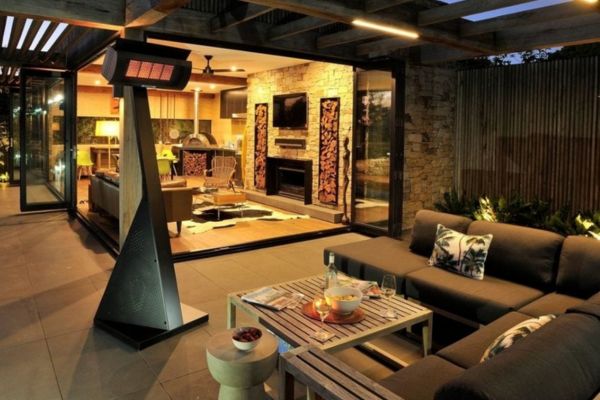
In photo: Dimplex Portable Outdoor Propane Infrared Patio Heater (DGR32PLP)
These heaters come in various styles and sizes, catering to different preferences and space requirements. From freestanding models that can be easily moved around to tabletop versions perfect for intimate gatherings, there's a patio heater to suit every setting.
With a reliable and effective patio heater, you can take full advantage of your outdoor spaces and create an ambiance conducive to relaxation and socialization in any season.
- How do Patio Heaters Work?
Patio heaters, much like traditional indoor heaters, operate using either fuel or electricity to provide warmth to outdoor spaces. Emitting radiant or infrared heat, these heaters create a cozy environment within a specific range from their location, akin to the comforting warmth of sunlight.
Regardless of the power source, patio heaters outdoor offer immediate functionality once powered on, ensuring prompt and reliable heat for your gatherings and leisure time.
Patio heaters are generally made up of these parts:
- Heater Regulator
- Glass Tube
- THP-Burner
- Thermocouple
- Pilot Assembly
- Thermostat
- Failure Safety Control Valve Kit
- Quick Disconnect Hose Set
- Head Assembly
- Spark Ignition

In photo: Most common parts of a free standing patio heater
Benefits of Patio Heaters:
- Extended Outdoor Use: Patio heaters allow you to enjoy your outdoor spaces during colder months, making your patio or deck usable year-round.
- Warmth and Comfort: They provide a reliable source of heat, ensuring comfort during chilly evenings, enhancing the overall experience of outdoor living.
- Ambiance Enhancement: Patio heaters add a cozy, inviting glow to outdoor settings, perfect for creating a pleasant atmosphere during gatherings or quiet nights.
- Increased Property Appeal: The addition of a patio heater can boost the attractiveness and functionality of your outdoor space, potentially increasing property value.
- Versatile Styles: Available in various designs, patio heaters can complement your outdoor decor, aligning with the aesthetic of your space.
- Social Gatherings: They create a warm and welcoming environment for hosting events, encouraging social interaction and enjoyment outdoors.
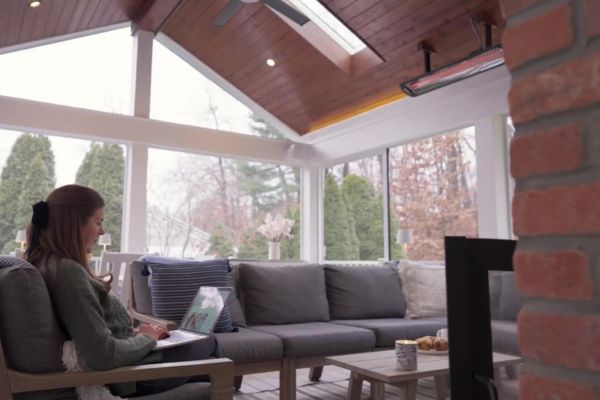
In photo: Bromic Tungsten Smart-Heat Wall/Ceiling Mounted Electric Heater
Benefits of Patio Heaters for Businesses:
- Enhanced Customer Experience: Patio heaters can make outdoor dining or lounging areas more comfortable, attracting more customers during cooler weather.
- Extended Dining Space: Businesses can increase their seating capacity by making outdoor spaces usable year-round, potentially boosting revenue.
- Atmospheric Ambiance: Heaters contribute to a cozy and inviting ambiance, encouraging longer stays and repeat business.
- Operational Flexibility: With patio heaters, businesses can host outdoor events or gatherings, regardless of the season, offering greater operational versatility.
- Brand Image: Providing comfortable outdoor heating can enhance a business's reputation for thoughtfulness and customer care.

In photo: Infratech WD Series 61-Inch Dual Element 6000W Flush Mounted Infrared Electric Heater
Whether for residential or commercial use, patio heaters provide a range of benefits that enhance outdoor living and entertainment, making them a valuable addition to any outdoor space.
Types of Patio Heaters by Fuel Type:
There are three common types of patio heaters based on the fuel used: Gas, Electric, and Wood Pallet. Each type has its advantages and considerations, catering to different preferences and outdoor setups.
1. Gas Patio Heaters
Gas patio heaters, available in natural gas and propane variants, offer warmth and ambiance to outdoor spaces. Natural gas heaters connect to your home's gas line, providing a steady and reliable heat source, ideal for permanent installation areas. Propane heaters, on the other hand, are known for their portability, using refillable tanks that allow them to be moved easily. Both types are favored for their quick heat-up times, ease of use, and ability to provide substantial warmth, making them popular choices for patios, decks, and other outdoor venues.
- Natural Gas Patio Heaters
In homes that already have a gas line, natural gas heaters provide abundant warmth on well-ventilated patios and decks.
Natural gas heaters are connected to your home's gas line, providing a continuous fuel source. They are ideal for stationary setups due to the required fixed gas line.
The combustion of natural gas results in a higher heat output than its electric counterparts.

In photo: Calcana High Output Commercial and Marine Grade Stainless Steel Gas Patio Heater Patio Heater
Natural gas patio heaters come in a variety of styles. They can be free-standing like propane heaters but a more popular setup would be wall-mounted or ceiling mounted.
Natural gas heaters cost less over time than a propane heater and you don't have to buy fuel constantly. However, they are not portable, and you'll need professional installation for these types of heaters.
- Propane Patio Heaters
Propane patio heaters are popular for their portability and ease of use, utilizing refillable propane tanks. They are versatile and can be moved as needed.
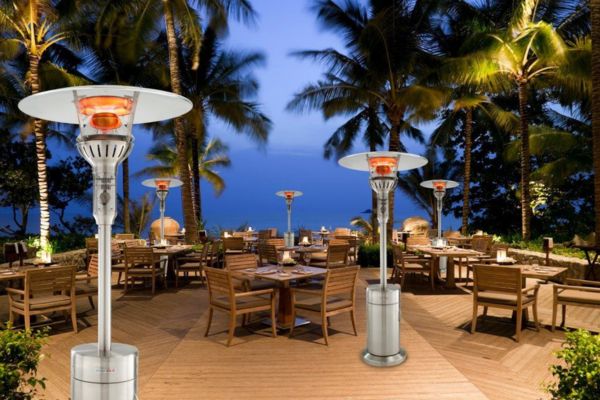
In photo: IR Energy Evenglo GA201M2 Portable Propane Heater
Propane Patio Heaters operate using refillable propane tanks, which can be easily replaced or refilled, offering flexibility in placement and mobility. These heaters are ideal for various outdoor settings, providing significant heat output that can be adjusted to suit comfort levels. Their design ranges from traditional to modern, fitting various decor styles. Propane heaters are particularly popular for their quick heating capabilities and ease of use, making them a go-to choice for extending the outdoor season.
Propane patio heaters come in many styles, the two most popular styles are portable mushroom heater and pyramid heater. However, many hanging and wall mounted gas patio heater models can be fueled by propane as well in case you need a powerful permanently affixed gas heater but don't have access to natural gas on your property.
2. Electric Patio Heaters
Electric patio heaters are a versatile and eco-friendly choice for outdoor heating. They can be used in a variety of settings including enclosed patio or even indoors.
Electric patio heaters offer a mix of hardwired and plug-in models, catering to different needs and installation preferences. Hardwired heaters are permanent fixtures, ideal for consistent heating in a designated area, while plug-in models provide flexibility and portability, allowing you to move the heater as needed. Both types maintain the efficiency and convenience of electric heating, making them suitable for a variety of outdoor and indoor spaces.

In photo: Bromic Platinum Smart-Heat Electric Patio Heater
Electric patio heaters come in various types, including freestanding, wall-mounted, and ceiling-mounted models, catering to different spatial needs and preferences.
Infrared electric heaters are particularly popular for their efficiency, directly warming people and objects without heating the air, making them ideal for breezy environments. They're suitable for residential balconies, patios, and commercial spaces, providing a clean, consistent source of warmth with minimal maintenance. Whether you're looking for a portable option or a permanent fixture, electric patio heaters offer a flexible solution to extend your enjoyment of outdoor spaces.
More so, electric heaters offer more design flexibility for your spaces. They are more discreet and can be installed in the ceiling, making them practically invisible.
3. Pellet Patio Heaters
Pellet patio heaters provide a unique, eco-friendly heating solution, using compressed wood pellets as fuel. They offer a traditional and natural heat source, ideal for those looking for an eco-conscious option. Pellets typically came from waste materials from logging and furniture-making industries, making pellet heaters a more sustainable option.

In photo: Timber Stoves Big Timber Elite Stainless Steel Pellet Patio Heater
One of the key advantages of these heaters is their impressive efficiency. Once lit in the morning, they can continue burning throughout the entire day without the need for constant relighting. Plus during summer months, pellet heaters can also be used as a grill or pizza oven with optional accessories.
With their long-lasting and consistent heat output, wood pellet patio heaters are a fantastic option for those who enjoy spending extended periods outdoors and want to create a comfortable environment in their outdoor living areas.

Infrared Patio Heaters
Infrared patio heaters provide warmth by emitting infrared radiation, directly heating objects and people rather than the air around them. This results in efficient and immediate warmth, making them ideal for windy or open outdoor areas.
Infrared patio heaters are highly energy-efficient since they do not waste energy heating the air. Instead, they deliver focused heat directly to the people and objects in their path, resulting in minimal heat loss.
Infrared patio heaters can be electric or gas-powered, offering versatility in installation and energy use. Infrared electric patio heaters are more popular and abundant. These heaters are known for their energy efficiency, cost-effectiveness, and environmentally friendly operation, as they produce no emissions and provide instant heat.
Infrared heaters come in various designs, including hanging, wall-mounted and freestanding models, catering to different outdoor heating needs.

In photo: Infratech WD Series 61-inch Flush Mounted Infrared Electric Heater
Electric vs. Gas Patio Heater
Choosing between electric and gas patio heaters depends on your needs and preferences. Electric heaters are convenient, offering easy installation and a clean, consistent source of warmth without emitting fumes. They're ideal for enclosed or semi-enclosed spaces. Gas heaters, using propane or natural gas, provide more substantial heat, suitable for larger, open-air environments. They offer mobility, especially with propane models, and a traditional, warm ambiance. Ultimately, your choice will hinge on factors like installation feasibility, environmental concerns, space size, and desired heat intensity.
Types of Patio Heaters by Installation Type:
Choosing the right patio heater extends beyond just selecting a fuel type—it's also about finding the ideal installation style that fits your outdoor space and lifestyle. In this section, we delve into various patio heater installation types, including free standing or portable, ceiling-mounted or hanging, wall-mounted, and table top models. Each type offers unique benefits and considerations, from mobility and space-saving features to aesthetic appeal and heating efficiency.
Whether you're enhancing a cozy balcony or a sprawling backyard, understanding these options will help you create a warm and inviting outdoor environment tailored to your needs.
1. Portable Patio Heaters
Portable heaters offer flexibility in placement and can be moved to different locations based on your heating needs and put away when not in use. They are ideal for various outdoor settings, providing warmth wherever needed.
These heaters are perfect for larger outdoor areas, such as open patios and spacious decks, where a fixed installation may not be practical.
- Pyramid Patio Heaters
Pyramid patio heaters offer a stylish and functional heating solution for outdoor spaces. Characterized by their distinctive pyramid shape, these heaters often feature a visible flame enclosed in a glass tube, providing both warmth and an attractive visual element. They typically use propane as a fuel source, allowing for portability and ease of use.

In photo: Crown Verity Quartz Tube Patio Heater (CV-2670-SS)
Pyramid heaters are not only effective at providing heat but also serve as a decorative piece, enhancing the ambiance of outdoor settings like patios, decks, and outdoor dining areas.
2. Hanging Patio Heaters
Hanging patio heaters are an excellent choice for those with limited floor space, as they can be securely suspended from ceilings or overhead structures. These heaters are particularly effective in covered patios, gazebos, or any outdoor area where a fixed heating solution is preferred. They distribute heat from above, providing uniform warmth to everyone beneath.
Available in various styles and fuel types, hanging patio heaters can be a stylish addition while offering functional heating. They're particularly suited for environments where preserving floor space is crucial, making them perfect for compact or crowded areas.
Hanging patio heaters can be ceiling mounted, flush mounted and wall mounted.
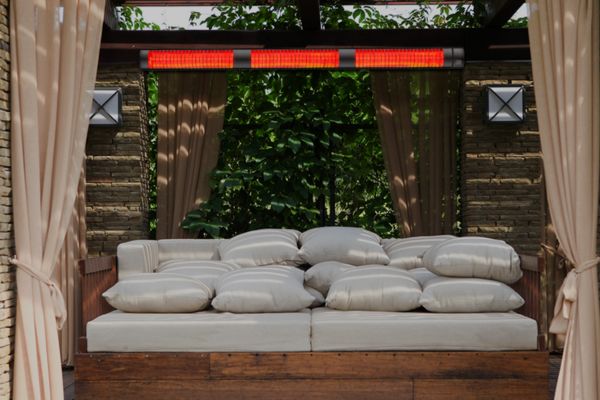
In photo: RADtec Torrid Series 52-Inch 6000 W 240 V Electric Infrared Heater (52-TOR-INF-HT)
- Ceiling Mounted Patio Heaters
Ceiling-mounted patio heaters offer a blend of aesthetics and functionality, providing heat without taking up floor or wall space. They're installed overhead, distributing warmth evenly across the area below. Ideal for both residential and commercial settings.

In Photo: Bromic Tungsten Smart-Heat Wall/Ceiling Mounted Electric Heater
Ceiling-mounted patio heaters can be hanging like a lamp or mounted with brackets at different heights.
- Flush-Mounted Patio Heaters
Flush-mounted patio heaters are seamlessly integrated into the ceiling, offering a sleek and unobtrusive heating solution. They're ideal for maintaining aesthetic appeal while providing consistent warmth from above, making them perfect for modern or minimalist outdoor spaces.

In photo: Bromic Platinum Smart-Heat Wall/Ceiling Mounted Electric Heater
Flush mounted patio heaters are typically electric, utilizing infrared technology to deliver efficient and direct heat to the area below. The flush-mounted design not only saves space but also enhances safety, reducing the risk of interaction with the heating element. This installation type is especially suited for covered patios or outdoor areas with limited vertical space.
- Wall Mounted Patio Heaters
Wall-mounted patio heaters are affixed to the wall, making them ideal for areas where space is at a premium or where a permanent heating solution is desired. They are particularly suitable for patios, decks, or dining areas where consistent and directed warmth is needed.

In photo: Bromic Tungsten Smart-Heat Wall/Ceiling Mounted Gas Heater
Wall-mounted heaters can vary in heat output and range, allowing you to choose a model that best fits the size and characteristics of your outdoor space. They offer the convenience of fixed installation with the flexibility of directional heat, ensuring your outdoor gatherings remain comfortable and enjoyable.
3. Tabletop Patio Heaters
Tabletop patio heaters are compact and designed to sit on outdoor tables, providing localized heat for smaller gatherings or intimate dining experiences. While not as powerful as larger heaters, they add a cozy touch to your outdoor ambiance, allowing you to enjoy your outdoor meals comfortably.
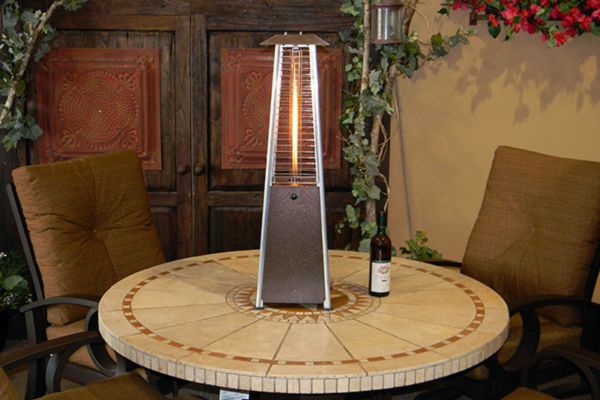
In photo: AZ Patio Heaters Hiland Bronze Pyramid Tabletop Propane Patio Heater (HLDS032-GTTHG)
When choosing a patio heater style, consider factors such as the size of your outdoor space, your heating preferences, and the level of permanence you desire. With the right style, your patio heater will not only provide warmth but also enhance the overall look and feel of your outdoor sanctuary.
Materials Used in Patio Heaters:
When choosing a patio heater, considering the material is crucial, as it impacts durability, appearance, and overall performance. There are four common materials used in patio heaters: Steel, Aluminum, Stainless Steel, Copper and Marine Grade Steel.
- Steel
Steel patio heaters offer a practical and cost-effective heating solution. Their sturdy construction ensures durability, and they efficiently distribute heat to keep you warm. However, steel heaters are prone to rust and corrosion, necessitating regular maintenance to prolong their lifespan.
- Aluminum
For those seeking lightweight and portable patio heaters, aluminum is an excellent choice. Resistant to rust and corrosion, aluminum heaters are perfect for coastal and humid environments. Their portability makes them easy to move around, but they may have slightly lower heat retention and can be prone to dents.
- Stainless Steel
Stainless steel patio heaters blend elegance with functionality. They are highly resistant to corrosion, ensuring longevity, and offer excellent heat retention and distribution. While more expensive than some options, stainless steel heaters require minimal maintenance, making them an attractive choice for those seeking a polished look.

In photo: Parasolschwank Portable Stainless Steel Propane Heater
- Copper
Patio heaters made of copper bring a touch of luxury to outdoor spaces with their stunning aesthetic. Copper is an exceptional heat conductor, providing efficient warmth. It resists corrosion and rust, promising long-lasting durability. However, copper heaters tend to be the most expensive and may develop a patina over time, which can add to their unique charm.
- Marine Grade Steel
Marine-grade steel, often used in patio heaters, is known for its exceptional resistance to corrosion, making it ideal for outdoor environments, especially in coastal areas where salt air can accelerate rusting. This material ensures durability and longevity, maintaining the heater's appearance and functionality over time. Choosing patio heaters made from marine-grade steel can be a wise investment for maintaining consistent performance and aesthetic appeal in challenging outdoor conditions.
Choosing the right material for your patio heater depends on factors like budget, style preferences, and environmental conditions. By understanding the pros and cons of each material, you can make an informed decision that enhances both the functionality and visual appeal of your outdoor space.

Choosing the Right Patio Heater:
WATCH: A quick and insightful podcast episode that will help you pick the best heater for your space!
Selecting the ideal patio heater involves considering various factors to ensure it meets your specific needs and preferences. Here's an expanded view:
- Heat Output: Assess the BTU or wattage to ensure the heater provides sufficient warmth for your intended space.
- Energy Efficiency: Consider the heater's energy consumption to maintain efficiency and reduce operational costs.
- Safety Features: Look for models with safety mechanisms like auto shut-off, tilt protection, and cool-to-touch surfaces.
- Durability and Material: Evaluate the construction materials for durability, especially in harsh weather conditions. Stainless steel, Aluminum or Copper is an excellent choice for its corrosion resistance, ensuring longevity and maintaining appearance over time. For coastal areas, pick Marine Grade steel to make sure your patio heater serves you longer.
- Ease of Use: Check for user-friendly features like adjustable heat settings, easy ignition, and remote controls.
- Design and Aesthetics: Choose a heater that complements your outdoor décor. The design should align with your space's theme while being functional.
- Space Considerations: Ensure the heater fits well in your available space, providing adequate warmth without overcrowding.
- Maintenance: Look for heaters that are easy to clean and maintain, ensuring they remain in good working condition for extended periods.
By carefully evaluating these aspects, you can choose a patio heater that not only enhances the comfort and usability of your outdoor space but also offers convenience, safety, and style.
Safety and Maintenance of Patio Heaters
Explore essential safety tips and maintenance practices to ensure your patio heater operates safely and efficiently, extending its lifespan and maximizing its utility.
- Are Patio Heaters Safe?
Patio heaters are generally safe when installed and used correctly. Electric patio heaters are the safest because there is no combustion, no harmful emissions, and lower clearances requirements.
As for gas patio heaters, most gas patio heaters are designed with safety features to prevent accidents and mishaps. One common safety mechanism is the tip-over switch, which automatically shuts off the heater if it accidentally tilts or falls. This prevents potential fire hazards in case the heater is knocked over.
Another crucial safety feature is the auto-shutoff function, which activates if the heater's flame goes out unexpectedly. This ensures that gas or fuel is not released into the air, reducing the risk of fire or gas leaks.
Moreover, many propane and natural gas heaters have built-in oxygen depletion sensors (ODS) that monitor the oxygen levels in the vicinity. If the oxygen levels drop below a safe threshold, the heater automatically turns off to prevent potential suffocation or carbon monoxide buildup.
- Safety Tips:
Stable Placement: Ensure your patio heater is placed on a stable, level surface to prevent it from tipping over.
Clearance: Maintain proper clearance from combustible materials as recommended by the manufacturer to prevent fire hazards.
Supervision: Never leave the heater unattended while it is on, especially in the presence of children or pets.
Ventilation: For gas heaters, ensure adequate ventilation to prevent carbon monoxide buildup.
- Maintenance Tips:
Regular Checks: Periodically inspect your heater for signs of wear, damage, or blockages, especially before the heating season begins.
Cleaning: Keep the heater clean from debris, leaves, and dust to ensure optimal performance and prevent fire hazards.
Storage: If the heater won't be used for an extended period, store it in a dry, protected place to prevent rust and weather damage.
Professional Servicing: For gas heaters, consider annual servicing by a professional to ensure all connections are secure and the unit is functioning safely.
Adhering to these safety and maintenance guidelines will help extend the life of your patio heater, ensuring it provides safe and effective warmth for many seasons.
Best Areas to Put Patio Heaters
The placement of patio heaters plays a crucial role in their effectiveness. Here are some ideal locations to position your patio heaters:
Seating Areas
Place the heaters near seating arrangements, such as dining tables or outdoor couches, to ensure that you and your guests stay warm and comfortable.

In photo: Infratech CD Series 39-Inch 4000W/5000W Dual Element Infrared Electric Heater
Entrances
If your patio or establishment has an entry point or exit, positioning a heater nearby can create a warm and welcoming atmosphere. For lodges, hotels and restaurants with valet stand or taxi pick up spots, patio heaters can be a necessity.
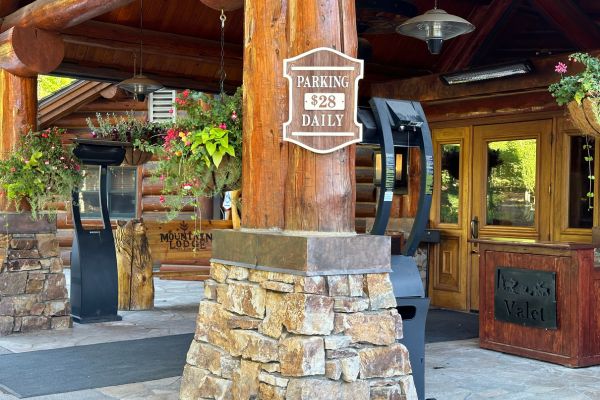
In photo: multiple Bromic patio heaters
Gathering Points
Place heaters strategically in areas where people tend to gather, such as around a fire pit or outdoor bar.

In photo: Infratech WD Series 61-Inch Dual Element 6000W Flush Mounted Infrared Electric Heater
Under Cover
If your patio has a roof or pergola, consider mounting heaters on the ceiling or walls to provide effective and space-saving heating.

In photo: Infratech CD Series 39-Inch 4000W/5000W Dual Element Infrared Electric Heater
Away from Obstructions
Ensure that the heaters have ample clearance from flammable materials, furniture, or any potential obstacles to maintain safety.
By taking these factors into account and carefully positioning your patio heaters, you can create a cozy and inviting outdoor environment, allowing you and your guests to enjoy your patio even in cooler weather.
Conclusion:
Choosing the right patio heater enhances your outdoor space, making it comfortable and inviting regardless of the season. By understanding the different types of patio heaters—whether gas, electric, or wood pellet—and considering their installation styles, you can find the perfect match for your needs. Safety and maintenance are paramount to ensure your heater operates efficiently and lasts for years. Embrace the warmth and ambiance a patio heater brings to your outdoor living, creating memorable moments under the stars.
Frequently Asked Questions:
- How Well Do Patio Heaters Work?
Patio heaters are generally effective at warming outdoor spaces, but their efficiency can vary based on type, size, and the environment in which they're used. Electric patio heaters and gas heaters are capable of providing immediate warmth to specific areas, making them suitable for chilly evenings. However, their effectiveness can be influenced by factors such as wind, overall outdoor temperature, and the size of the area to be heated. Proper placement and choosing the right heater for your space are crucial for maximizing warmth and comfort outdoors.
- How Many Patio Heaters Do I Need?
The number of patio heaters required for an area depends on the size of the space and the heating capacity of each heater.
As a general rule, for smaller areas, a single powerful heater may suffice. However, for larger or more open spaces, multiple heaters are often necessary for even heat distribution.
Consider the total BTUs required for the area and divide it by the BTU output of each heater to determine the number needed.
We can help you calculate how many heaters you need as well as the best layout for your area, simply email us at support@modernblaze.com and we'll be happy to help.

In photo: BistroSchwank Two Stage Natural Gas Patio Heater (MO-2152)
Still have questions? Comment below or send your questions to support@modernblaze.com - we'll be happy to answer them.
Want to save on your patio heater purchase? Click here to get on our list and get a discount on your first order. We will keep you in the loop about new exciting products and let you know if we have a sale.
Ready to explore different types of patio heaters? Check out these collections:
SHOP BY FUEL TYPE
SHOP BY INSTALLATION
- Free Standing Electric Patio Heaters
- Wall Mounted Electric Patio Heaters
- Wall Mounted Gas Patio Heaters
- Hanging Electric Patio Heaters
SHOP BY STYLE
Commercial Patio Heaters
Luxury Patio Heaters
VALUE FINDS
- Victory 38-Inch All Weather Electric Infrared Heater
- AZ Patio Heaters Hiland Bronze Pyramid Tabletop Propane Patio Heater
- Dimplex Plug-In 36-inch 1500W 120V Infrared Electric Heater
MADE IN USA
- Standard Output Gas Patio Heaters
- Two Stage Stainless Steel Infrared Gas Heater
- Infrared Electric Heater
Check out our social media for more inspiration:

